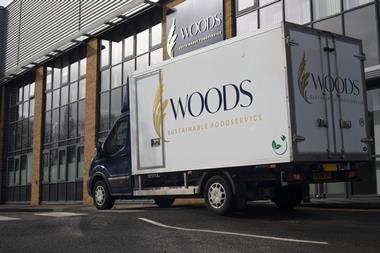The supermarkets have so far failed to convince government they have a role to play in eco-towns. Graham Holter asks how they can turn round the situation
Gordon Brown envisaged 10 carbon-neutral communities when he unveiled the eco-towns project two years ago. So far, four have been given the go-ahead Rackheath in Norfolk, north-west Bicester in Oxfordshire, Whitehill Bordon in Hampshire and the China Clay Community near St Austell, Cornwall.
However, Tesco's plans for a proposed eco-town at Hanley Grange near Cambridge were withdrawn in August 2008 after a public backlash. And The Co-operative Group's hopes of becoming the prime mover within an eco-town in Pennbury, Leicestershire were dashed this summer when it learnt its embryonic plans had not been included in the government's programme.
So does this mean the supermarkets will be reduced to watching from the sidelines as others drive the development of eco-towns?
Not necessarily. The government is hoping to sanction six more applications, so they have a second chance, but if they are going to make the most of that opportunity they will have to convince the government the focus is on self-sustaining rather than self-serving, warn experts.
The supermarkets have made great strides in developing environmentally friendly stores. Their flagship eco-stores not only use less electricity than similar-sized non-green stores, they also use CO2 as refrigerants instead of HFCs, heat and power plants that run on recycled vegetable oil or biomass and are constructed from locally sourced construction materials. Most also have wind turbines and rainwater harvesting systems.
But they need to present a more compelling vision of how those stores fit within the wider community and what that community will look like if they want to be taken seriously as eco-town protagonists, says Ian Tant, senior partner at planning consultancy Barton Willmore. "They will have to adapt their existing practices," he says. "This will mean being prepared to join with the experiments in low-carbon living. The large carpark front-of-store and the truck-based deliveries from regional distribution centres bringing food in from across the planet will also have to be re-examined."
There are some bigger questions to be asked. Should areas be set aside within or near eco-towns for food production? Should supermarkets rely more heavily than normal stores on locally sourced food? And how will the supply chain need to be adapted?
Perhaps their biggest challenge, however, will be to overcome innate public distrust of supermarkets. Supermarket development on greenfield sites or prime agricultural land is unlikely to receive a public round of applause at the best of times. Couple this with plans for 8,000 houses and the reaction is even easier to predict, though Tesco failed to see it coming with Hanley Grange, it seems.
There is a PR dimension to consider, agrees property lawyer Beverley Firth, a partner at law firm Mills & Reeve. "Eco-towns, like any other planning proposal, should stand or fall on their merits rather than the identity of any party associated with them," she says. "But in my area Tesco has come up against quite a bit of local public opposition and this could rub off on any eco-town association."
This would be a shame, says Tant. "If the retailers aren't on board at the planning stage, there's a real danger of unrealistic ideas being built into the planning permissions and of workable ideas being missed," he says, adding that retail investment could be "the spur that gets the eco-towns started", something to give banks confidence in a scheme's viability.
That's if they get off the drawing board. The four proposals that have been given the green light still have to go through the planning process and construction is unlikely to begin until 2016. Seven years is a long time, but with a change of government likely next year, there's still all to play for.
Sign in to comment on this article
Not logged in before? Register for FREE guest access today.
You will be able to:
- Read more stories
- Receive daily newsletters
- Comment on stories
Advert















No comments yet